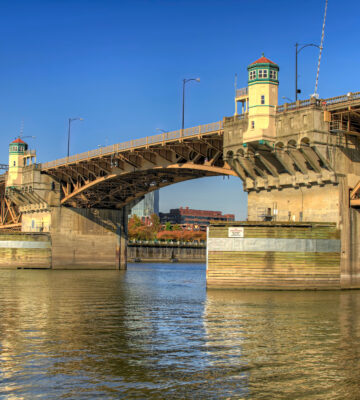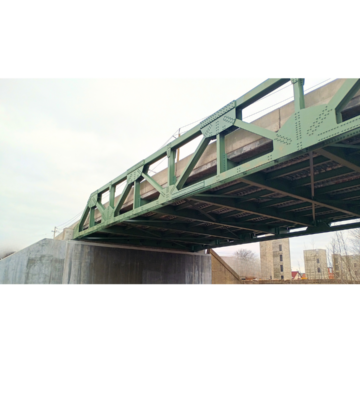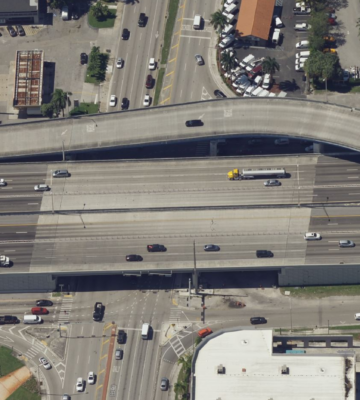In the Borough of Brooklyn, New York, the Hamilton Avenue Bridge carries a total of eight lanes of traffic over the Gowanus Canal—a heavily traveled waterway for commercial barges. The structure is comprised of two bridges, each consisting of one bascule span, with each span carrying four lanes of one-way traffic (one Northbound and one Southbound) and a pedestrian sidewalk. In 1942, H&H (as Waddell & Hardesty) designed the original bridges based on the patented Hanover skew design—an innovative approach to skewed bascule crossings used on three bridges in the United States. The Hamilton Avenue Bridge is one of the two remaining structures of this type.
H&H’s services for this bridge reconstruction project included the replacement of the two movable span superstructures, the replacement of the mechanical and electrical systems, and the replacement of the existing pier protection system. The superstructure replacement included widening the existing roadway on the movable span to carry four 11-foot wide lanes on each bridge. This widening required modification to the existing piers designated to remain in order to accommodate the new spans. Due to heavy volumes of traffic on the roadway, each bridge is to be replaced in a two-month roadway closure period. The closures occurred in July and August, the lowest traffic volume months, in 2007 and 2008 for east and west spans, respectively. During these periods both directions of traffic were carried by the adjacent bridge. Community outreach was performed during the design and construction process.




